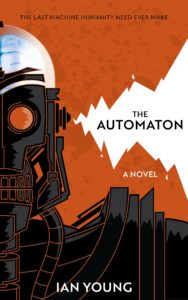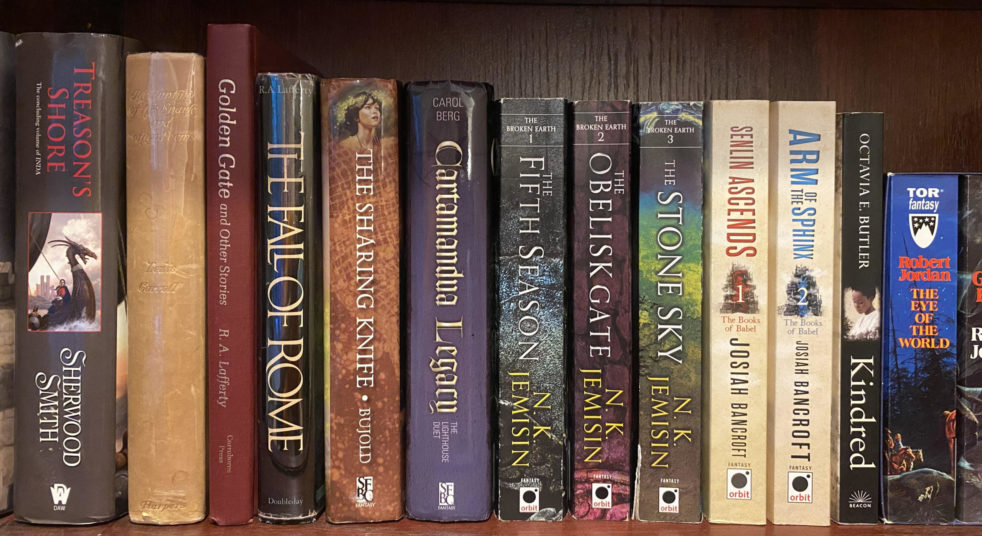
My judging team for the third annual Self-Published Science Fiction Competition (SPSFC3) has scouted our entire allotment and selected seven books to be passed around the team for full evaluations by our entire complement of judges. As I read two of the seven in the scouting phase, that will mean five new reads for me personally, all books that either got thumbs up from multiple scouts or had one of my teammates really go out on a limb in favor of it. The Automaton by Ian Young was one that saw split opinions from the slush readers, with two praising it as a classic idea-heavy sci-fi and another claiming the AI lead made it hard to emotionally engage. As someone who enjoys philosophical sci-fi but also reads in large part for the characters, I wasn’t quite sure where I’d land in the debate, but I was quite intrigued to find out.
The Automaton ostensibly takes place in the far future, where biological humanity has died out, with their consciousnesses preserved in the literal clouds. While what’s left of humanity is contained in a superstructure floating high above the Earth’s surface, there remain some embodied androids. One in particular, the novel’s lead, is woken up without any memory in order to address a vague anomaly. But in order to understand the context, it must first engage a series of stories from history. And it is this collection of stories that makes up the bulk of the novel, with the automaton in the frame story returning only for short snippets between segments until the final chapters when the anomaly can be understood in detail.
The stories that constitute The Automaton are separated by decades, though in true generational fashion, the central characters all hail from one family. It starts in the near future, when an underpopulation crisis prompts the creation of sentient automatons to address the worker shortage, and it continues farther into the future, showing how human attitudes toward automatons shape the course of history.
With such different attitudes in each segment of history, these historical stories flit back and forth from subgenre to subgenre, with political intrigue followed by war followed by small-scale stories of ordinary life in a changed world. Each of these stories is intriguing and professionally written, but at the same time, each feels curiously incomplete. In true short fiction fashion, they tend to end at the climax, but those climaxes never delivered the punch I felt they ought to have, given how many of them had such high stakes. It can be difficult to suss out exactly what drives engagement with a particular story, but in these cases, I’m inclined to blame the setup more than the endings. The last notes are correct, but a series of in media res beginnings don’t provide the emotional context needed to deliver that extra heft to the conclusion.
Of course, the stories are in some ways incomplete by design. After all, they are themselves just context for the anomaly yet unresolved in the frame story. But waving a hand at an anomaly isn’t a sufficient hook for hundreds of pages of short story, and I’m not sure the context they provide brings the frame story to particularly lofty heights. So many vignettes meditate on the relationship between humanity and the automatons, but these are very much meditations as opposed to any sort of focused thesis. And inviting the reader to think instead of pushing a particular conclusion is all well and good, but it’s not the story of thing that delivers that big moment of convergence. The frame is solid, but it’s not going to be mind-blowing, and each vignette thus must carry independent weight.
The Automaton is an ambitious, generational sci-fi tale meditating on humanity, AI, and the tendency to fall into the same cycles over and over. It’s not, however, a story with a strong central thread weaving every story together. So ultimately it stands and falls on the individual vignettes that make up the whole. And while each is professionally written and drives toward its own independently satisfying conclusion, the constituent stories tend to build a little too quickly to deliver full emotional force.
Recommended if you like: idea-driven sci-fi told in vignettes.
Can I use it for Bingo? It’s hard mode for Self-Published and Features Robots.
Overall rating: 12 of Tar Vol’s 20. Three stars on Goodreads.
SPSFC score: 6/10 for my personal score. The official team score will be determined in concert with my teammates.
